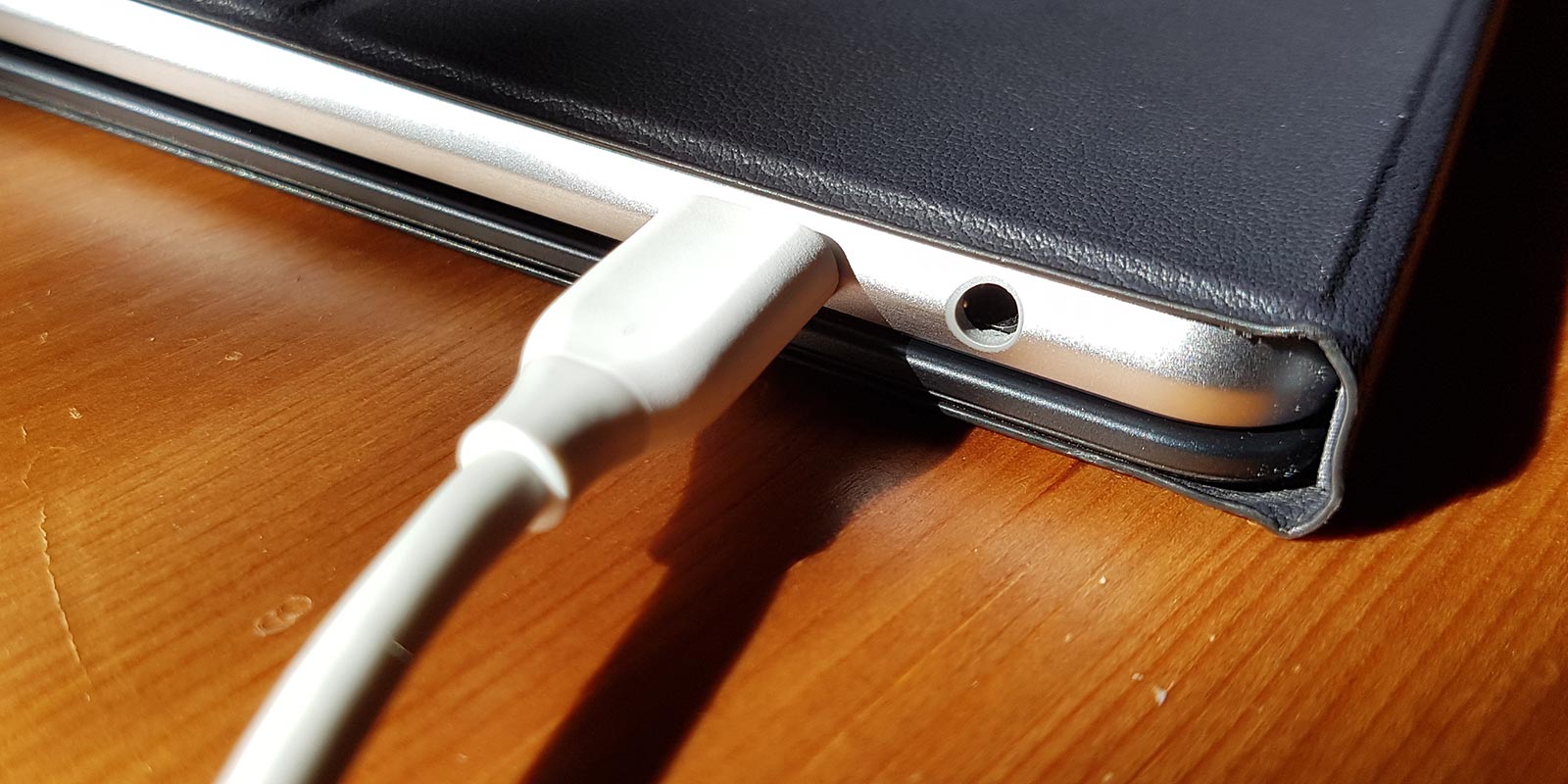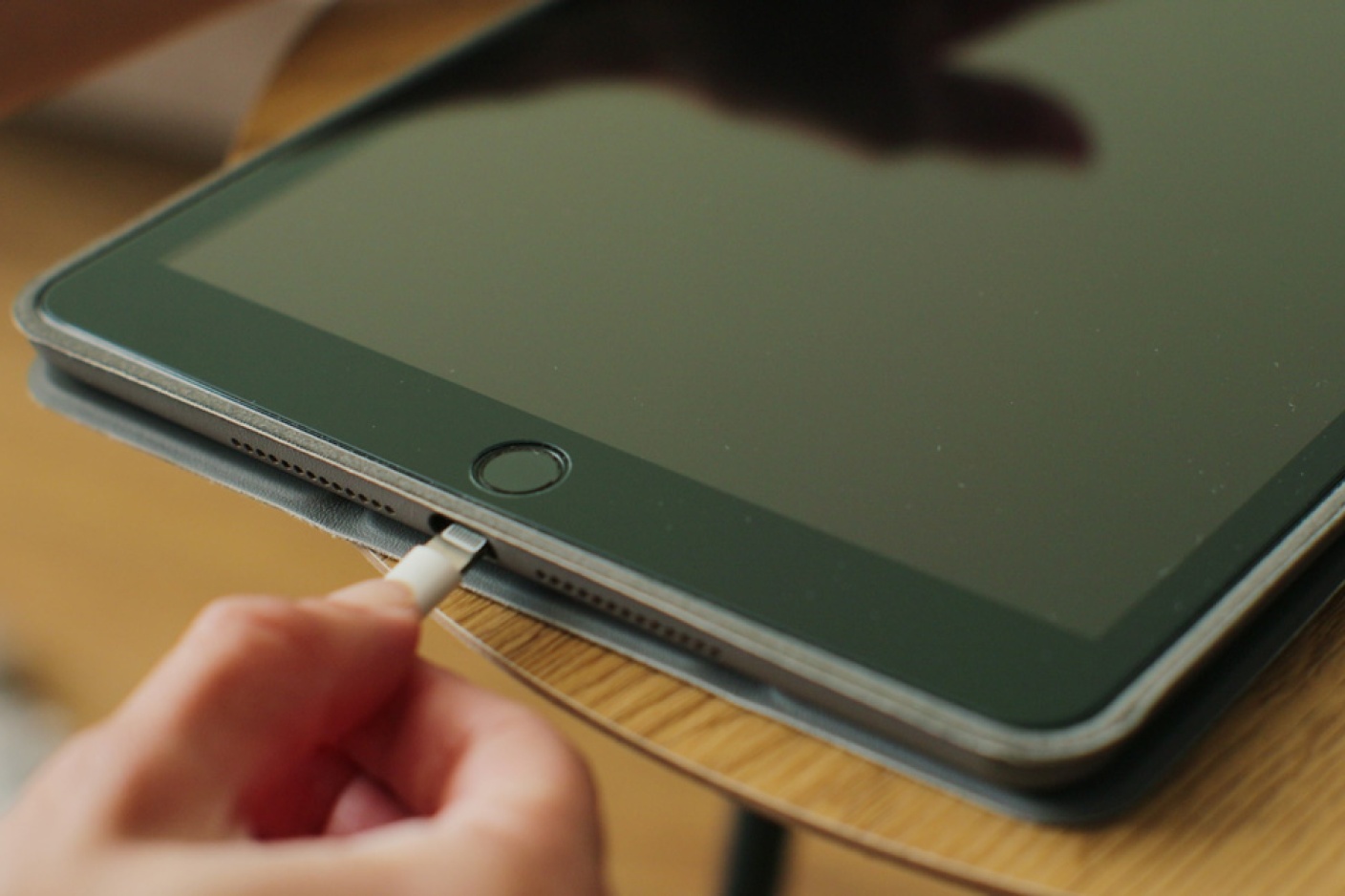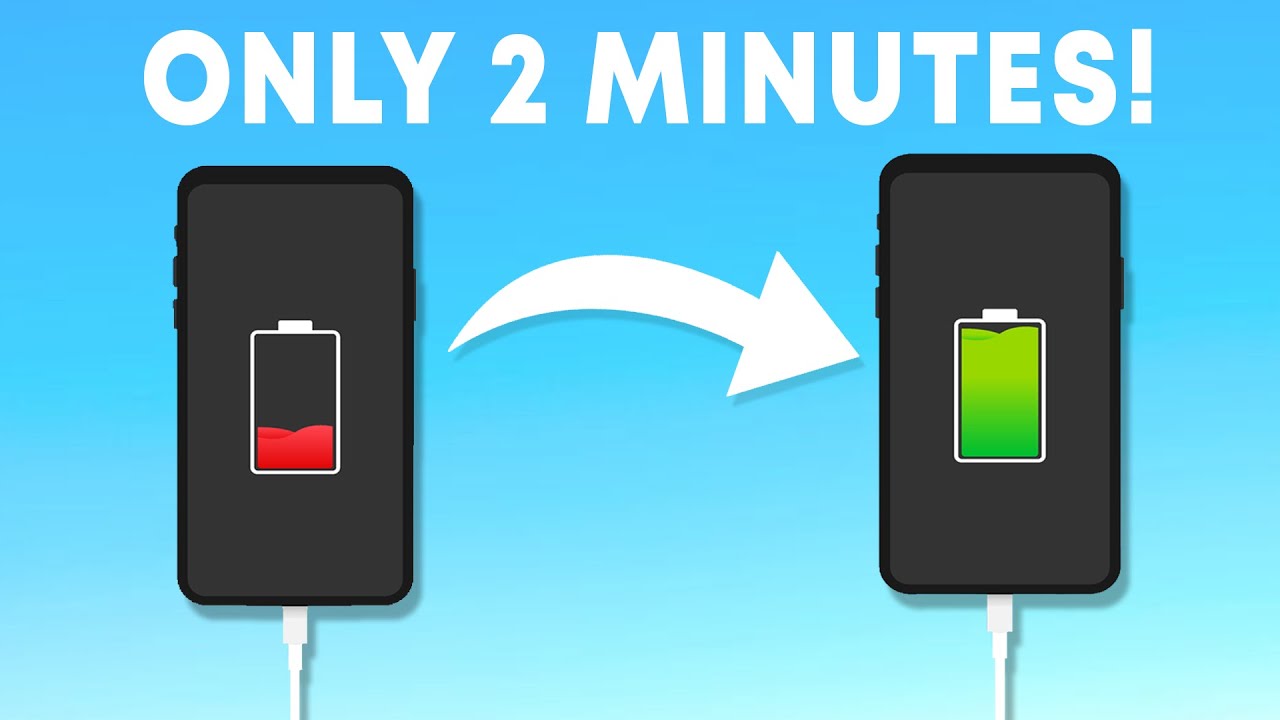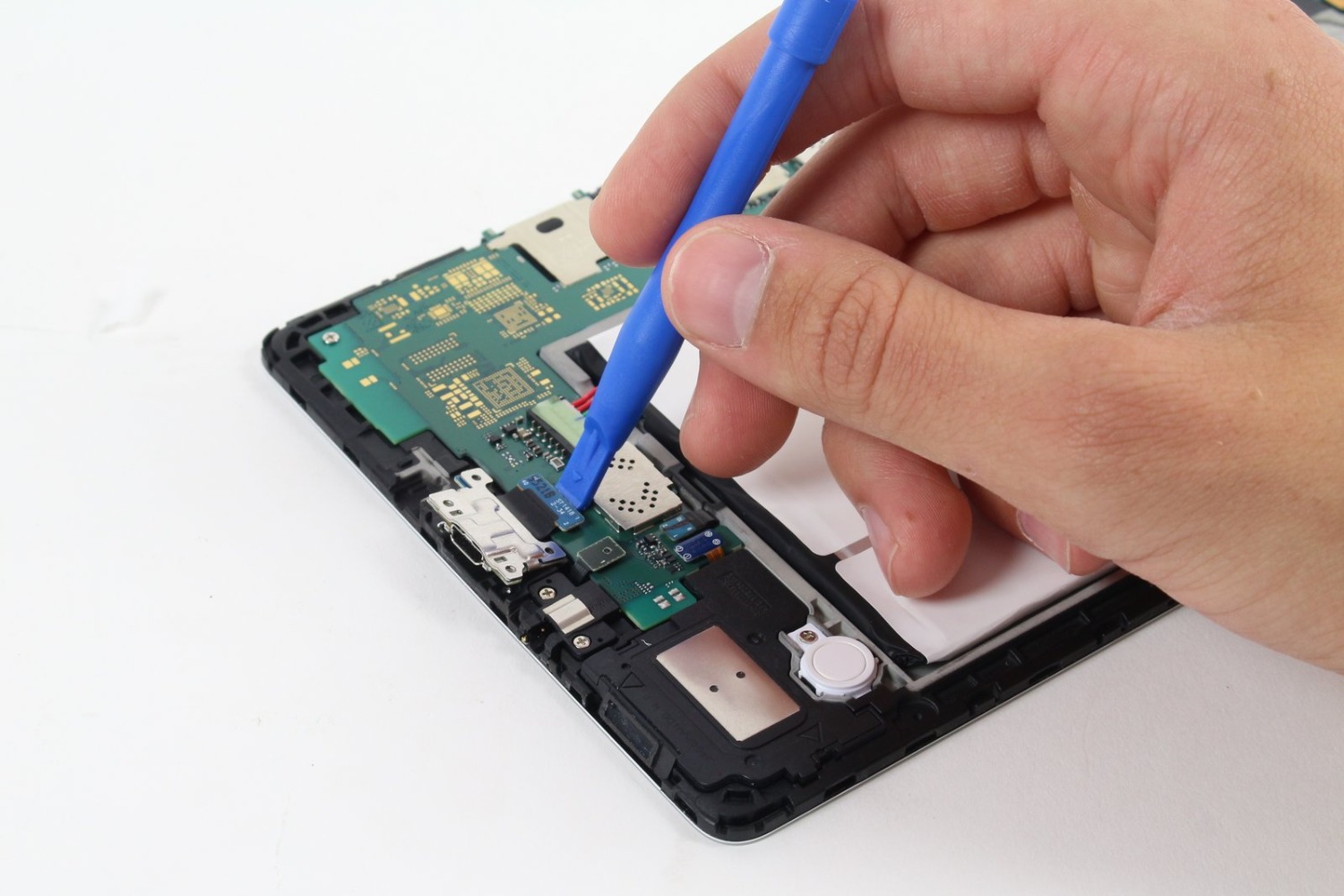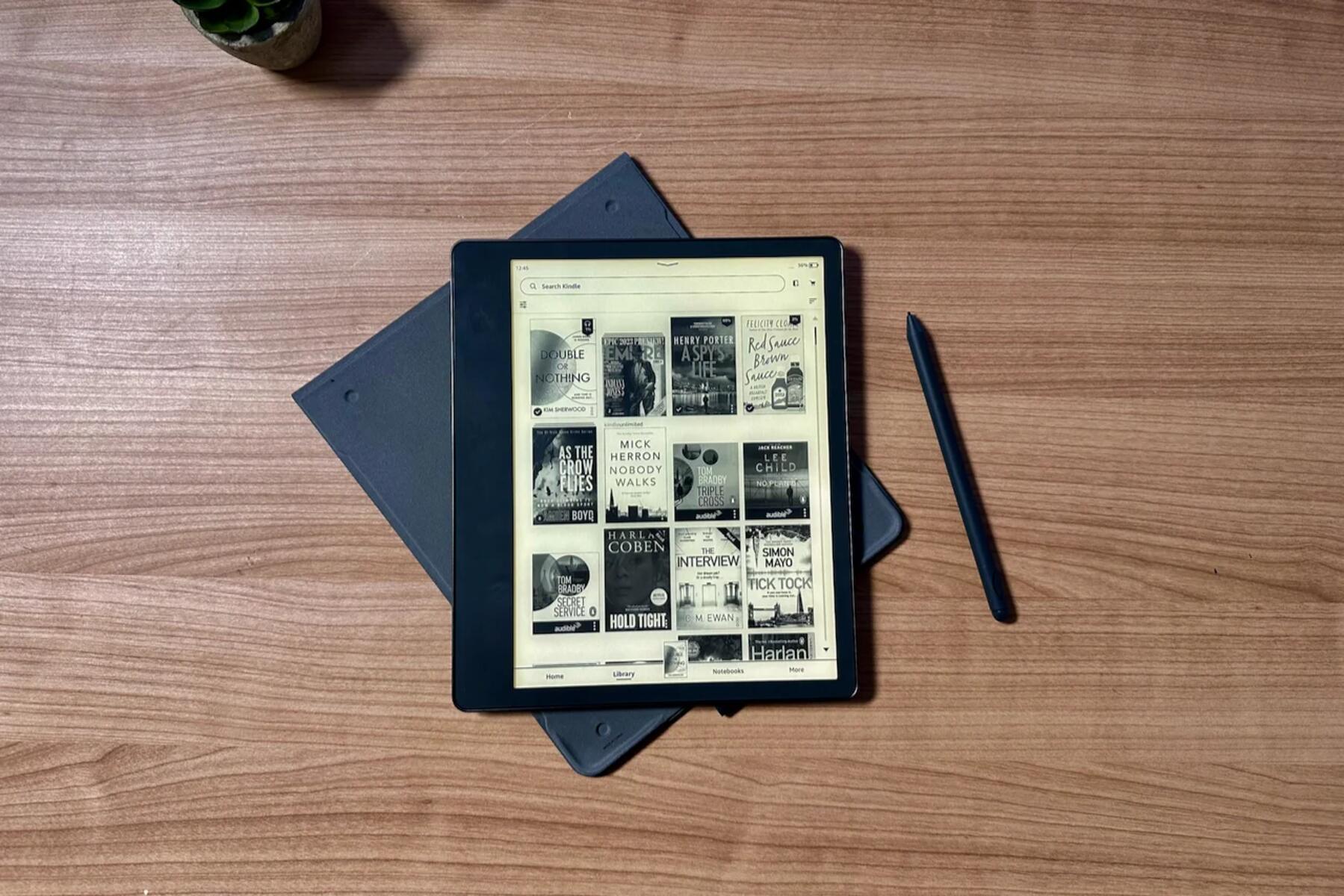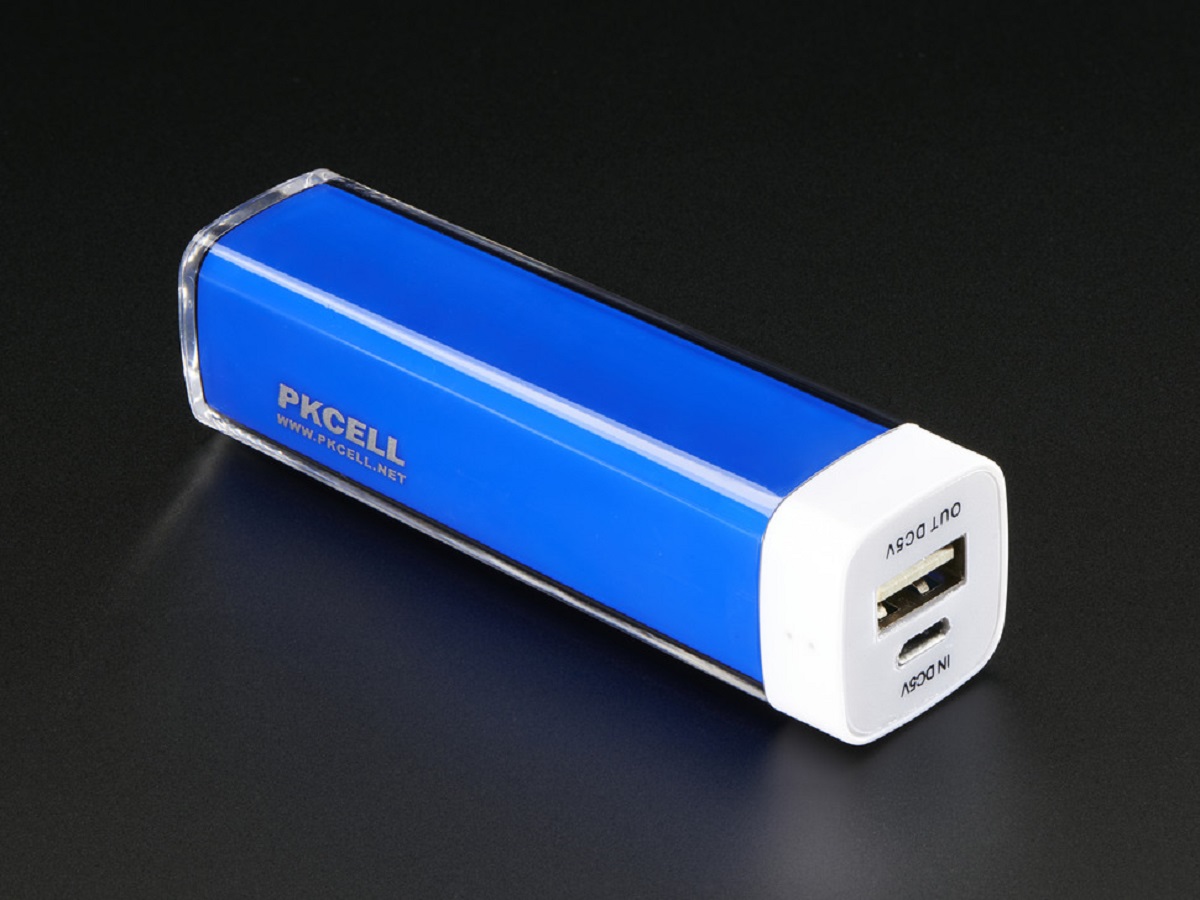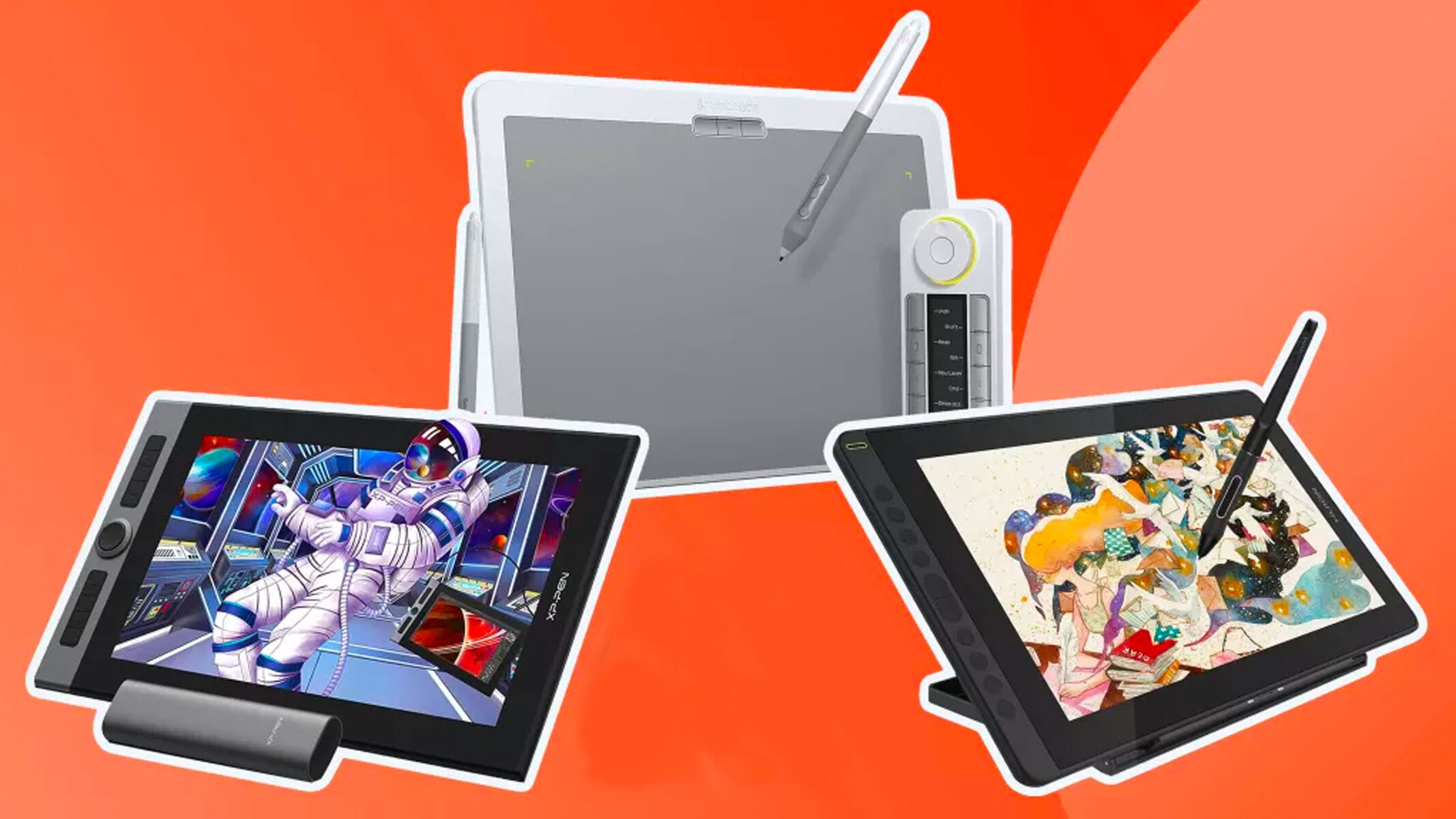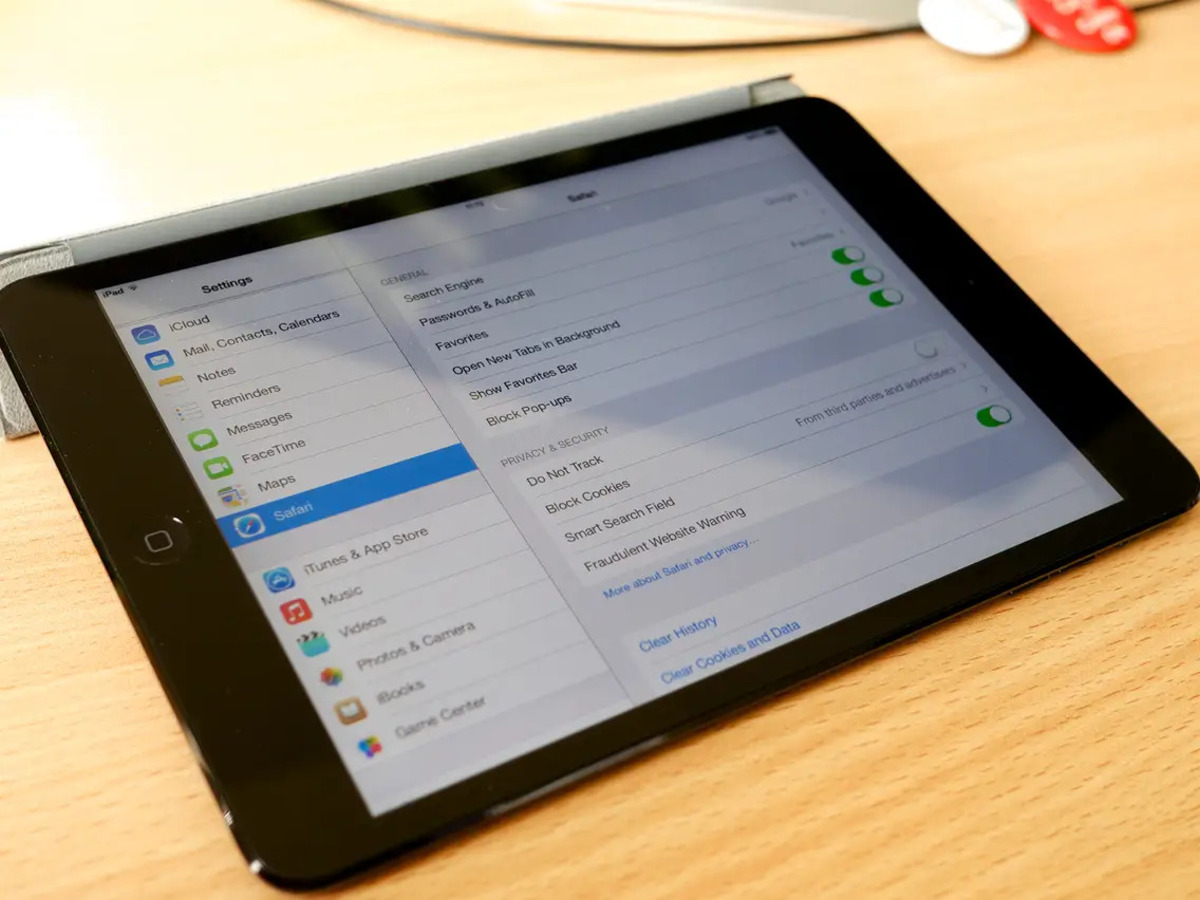Introduction
In today’s digital age, tablets have become an essential part of our lives. Whether you use them for work, entertainment, or staying connected with loved ones, it’s important to ensure that your tablet is always charged and ready to go. But when should you charge your tablet? Should you wait until the battery is completely drained, or should you plug it in as soon as you see the battery percentage dropping? In this article, we will explore the best practices for charging a tablet and when to do so.
Batteries are the lifeblood of our devices, including tablets. To understand when to charge a tablet, we first need to have a basic understanding of how batteries work. Tablets typically use lithium-ion batteries, which are known for their high energy density and long-lasting performance. These batteries work by storing and releasing electrical energy through a chemical reaction. The performance and lifespan of a battery can be affected by how it is charged and discharged.
When it comes to charging tablets, most devices come with built-in mechanisms that regulate the charging process. When you connect your tablet to a power source, the charger delivers a constant stream of electric current to the battery. Most tablets also have a charging indicator, which may be a visual icon or a percentage display, to show the battery’s current level.
Knowing when to charge your tablet is crucial to ensure that you always have enough battery capacity when you need it. If you wait until your tablet’s battery is completely drained before charging it, you may be pushing the limits of the battery’s performance. On the other hand, if you constantly keep your tablet plugged in and charging, you may be putting unnecessary strain on the battery and reducing its lifespan.
Throughout this article, we will explore the signs that indicate when your tablet needs to be charged, as well as the best practices for charging your tablet to optimize its battery performance. By following these guidelines, you can ensure that your tablet is always ready for use and that its battery remains healthy and efficient.
Battery Basics
Understanding the basics of how tablet batteries work is essential for knowing when to charge your device. Most tablets are powered by lithium-ion batteries, which offer high energy density, longer lifespan, and improved performance compared to older battery technologies. These batteries work by utilizing a chemical reaction to store and release electrical energy.
Lithium-ion batteries consist of two electrodes, an anode, and a cathode, separated by an electrolyte. When the battery is charged, lithium ions move from the positive electrode (cathode) to the negative electrode (anode), storing energy in the process. When the battery is discharged, the lithium ions flow back to the cathode, releasing stored energy to power the device.
One crucial aspect of lithium-ion batteries is their charging and discharging cycles. Each battery has a limited number of charge cycles before its overall capacity and performance gradually decline. A charge cycle refers to discharging a battery to a certain percentage and then fully charging it again. It’s important to note that a partial discharge followed by a partial charge does not count as a full cycle but as a fraction of one.
In general, it’s recommended to avoid frequent deep discharging of the battery, as this can put additional strain on the cells and reduce their lifespan. Instead, it’s best to keep the battery level between 20-80% for optimal performance. Occasional full discharges can help recalibrate the battery gauge, but it’s not necessary or beneficial for regular usage.
Moreover, exposing a tablet battery to extreme temperatures can also affect its performance and lifespan. High temperatures can accelerate chemical reactions within the battery, causing it to degrade faster. On the other hand, extremely low temperatures can temporarily reduce battery capacity. Therefore, it’s advisable to avoid exposing your tablet to extreme heat or cold for long periods.
By understanding the basics of lithium-ion batteries and their characteristics, you can make informed decisions about when to charge your tablet to maintain its battery performance and maximize its lifespan. In the following sections, we will dive deeper into the charging process and explore the signs that indicate when your tablet needs to be charged.
How Tablets Charge
Understanding how tablets charge can help you determine the best charging practices for your device. When you connect your tablet to a power source using the charging cable and adapter provided, the charging process initiates.
Most tablets use a USB charging method, where the charging cable has a USB connector on one end that connects to the power adapter and a proprietary connector on the other end that plugs into the tablet. The power adapter converts the AC (alternating current) electricity from the wall outlet into DC (direct current) electricity that the tablet can use.
Once the tablet is connected to the power source, the charger delivers a steady stream of electric current to the tablet’s battery. This current flows into the positive electrode (cathode) and causes the lithium ions to move towards the negative electrode (anode), storing energy in the battery.
During the charging process, the tablet’s operating system continuously monitors the battery level and adjusts the charging current accordingly to prevent overcharging. When the battery reaches its maximum capacity, the charging process stops, and the current flow ceases.
Most tablets have a visual indicator, such as a battery icon or percentage display, to indicate the battery’s current level during charging. It’s important to note that the battery may not charge at a linear rate – it may charge more rapidly when the battery level is low and slow down as it approaches full capacity.
It’s recommended to use the original charger and cable provided by the tablet manufacturer for optimal charging performance. Other chargers may not provide the correct voltage or current output, which can result in slower charging or even damage to the battery.
In addition to the standard charging method, some tablets also support wireless charging. Wireless charging uses electromagnetic fields to transfer energy from a charging pad or dock to the tablet’s battery. This eliminates the need for cables, but the charging speed may be slower compared to wired charging.
Understanding how tablets charge can help you make informed decisions about when and how to charge your device. In the next sections, we will discuss the signs that indicate your tablet needs to be charged and the best practices for charging your tablet to optimize its battery performance.
Signs That Your Tablet Needs to be Charged
It’s essential to be aware of the signs that indicate your tablet needs to be charged to ensure that you don’t run out of battery at inconvenient times. Here are some common signs to watch out for:
- Low Battery Notification: Most tablets will display a low battery notification when the battery level drops below a certain percentage (usually around 20% or lower). This is an obvious indication that your tablet needs to be charged soon.
- Dropping Battery Percentage: Keeping an eye on the battery percentage can give you a good indication of when it’s time to charge your tablet. If you notice a steady decrease in the battery percentage, it’s a sign that your tablet needs to be charged sooner rather than later.
- Dimming Screen: When the battery level gets critically low, some tablets will automatically dim the screen brightness to conserve power. If you notice your screen becoming dimmer, it’s a clear indication that it’s time to charge your tablet.
- Sluggish Performance: As the battery level decreases, you may notice your tablet’s performance becoming slower or more sluggish. This can be due to the device conserving power to extend the battery life. If you experience a noticeable drop in performance, it’s a sign that your tablet needs to be charged.
- Automatic Shutdown: When the battery level reaches a critically low point, some tablets may automatically shut down to prevent damage to the battery. If your tablet unexpectedly turns off, it’s a clear indication that it needs to be charged.
It’s important to note that different tablets may have slightly different behaviors and notifications. Familiarize yourself with your specific tablet’s indications and settings to ensure you don’t miss any signs that it needs to be charged.
Being aware of these signs will help you stay prepared and avoid any disruptions due to a dead battery. In the next section, we will explore the signs that indicate your tablet should be charged, even if it’s not critically low on battery.
Signs That Your Tablet Should be Charged
While it’s important to know when your tablet needs to be charged due to low battery, there are also instances when you should charge your tablet, even if it’s not critically low on battery. Here are some signs that indicate your tablet should be charged:
- Long Periods of Inactivity: If you haven’t used your tablet for an extended period, it’s a good idea to charge it before using it again. Batteries naturally lose some charge over time, even when the device is turned off. Charging your tablet ensures that it’s ready for use when you need it.
- High Battery Drain Apps: Certain applications and activities on your tablet can have a significant impact on battery life. If you are using resource-intensive apps, such as gaming or video streaming, or engaging in activities that rapidly drain the battery, such as using GPS navigation, it’s advisable to charge your tablet to ensure you have sufficient battery life to complete your task.
- Upcoming Travel: If you have a trip or travel planned, it’s a good practice to charge your tablet before leaving. This is especially important if you’ll be using your tablet for entertainment or navigation during the journey, as it ensures that you have a full battery to rely on.
- Unreliable Charging Opportunities: In some situations, you may be in an environment where access to power outlets or charging opportunities is limited or unreliable. If such circumstances are expected, it’s wise to charge your tablet when you have the chance to ensure that you have enough battery to last until the next reliable charging opportunity.
- Battery Life for Specific Tasks: If you’re planning to use your tablet for an extended period without access to a power source, it’s important to consider the battery life required for that specific task. For example, if you’re attending a presentation or conference where you’ll be using your tablet extensively, it’s a good idea to charge it fully beforehand to avoid running out of battery during important moments.
By paying attention to these signs and taking proactive measures to charge your tablet when necessary, you can ensure that you have enough battery life to support your activities and avoid any interruptions due to a low battery. In the next section, we will discuss best practices for charging your tablet to optimize its battery performance.
Best Practices for Charging Your Tablet
To ensure optimal battery performance and longevity, it’s important to follow some best practices when charging your tablet. By adopting these practices, you can maximize your tablet’s battery life and avoid potential issues. Here are some key tips to keep in mind:
- Use the Original Charger: Whenever possible, use the original charger and cable that came with your tablet. Using third-party chargers may not provide the correct voltage or current output, which can result in slower charging or even damage to the battery.
- Avoid Extreme Temperatures: Exposing your tablet to extreme temperatures can affect its battery performance and lifespan. Avoid prolonged exposure to high heat or cold, as it can degrade the battery more quickly. If possible, charge your tablet in a cool and well-ventilated area.
- Avoid Constantly Fully Draining the Battery: Lithium-ion batteries do not require complete discharge before charging. In fact, frequent deep discharges can shorten the battery’s lifespan. It’s best to keep the battery level between 20% and 80% for optimal performance and longevity.
- Avoid Overcharging: Modern tablets have built-in mechanisms to prevent overcharging. It’s safe to leave your tablet connected to the charger even after it reaches 100% charge. However, for long-term battery health, it’s ideal to unplug the charger once the battery is fully charged.
- Avoid Using the Tablet While Charging: While it may be tempting to use your tablet while it’s charging, it’s generally advisable to avoid this practice. Using resource-intensive apps or activities during charging can generate heat and put additional stress on the battery, which may impact its long-term performance.
- Charge in Short Bursts: Charging your tablet in short bursts throughout the day is generally better than one long continuous charge. This practice can help avoid overheating and ensure a more efficient charge. However, if you find it inconvenient, you can also charge your tablet overnight, as long as you follow the next tip.
- Avoid Overnight Charging: While it’s convenient to charge your tablet overnight, it’s generally recommended to unplug it once the battery is fully charged. Leaving your tablet connected to the charger for extended periods can put unnecessary stress on the battery and potentially lead to a shorter overall lifespan.
By following these best practices for charging your tablet, you can optimize its battery performance and ensure long-term battery health. Remember, each tablet model may have specific recommendations or settings related to charging, so it’s always a good idea to consult the user manual or manufacturer’s guidelines for your specific device.
How Long Should You Charge Your Tablet?
Knowing how long to charge your tablet is essential to maintain its battery health and ensure optimal performance. While there isn’t a specific time frame that applies to all tablets, there are some general guidelines to consider:
- Charge Until Full: It’s typically recommended to charge your tablet until the battery reaches 100% capacity. Most tablets have a charging indicator that displays the current battery level, so you can monitor the progress. Once it reaches full charge, unplug the charger to avoid overcharging.
- Avoid Frequent Partial Charges: Partial charges, where you connect your tablet to the charger for short periods multiple times a day, can be less efficient and may impact the battery’s overall lifespan. It’s generally better to charge your tablet to full capacity in one session, rather than frequent partial charges.
- Consider Fast Charging: Some tablets support fast charging technologies that allow you to charge the battery at a faster rate. If your tablet supports fast charging, it can significantly reduce the charging time. However, be mindful that fast charging may generate more heat, which can affect battery longevity if used excessively.
- Adjust Charging Time Based on Battery Capacity: Larger battery capacities generally require more time to charge fully. If you have a tablet with a larger battery, expect a longer charging time. Additionally, the charging time can also be influenced by the charger’s output current. Higher current chargers can charge the battery faster.
- Avoid Leaving Your Tablet on Constant Charge: While it’s tempting to keep your tablet connected to the charger continuously, it’s generally better for battery health to unplug it once it reaches full charge. Constant charging can elevate the battery’s temperature and potentially decrease its lifespan.
It’s important to note that individual charging times can vary depending on factors such as battery capacity, charger output, and tablet usage during charging. It’s always a good practice to refer to the manufacturer’s guidelines for your specific tablet model to get more accurate charging recommendations.
By following these general guidelines and being mindful of your tablet’s battery status and charging behavior, you can ensure that your tablet is adequately charged while maintaining its battery health in the long run. In the next section, we will address the common question of whether it is advisable to charge a tablet overnight.
Charging a Tablet Overnight: Is it a Good Idea?
Charging your tablet overnight is a common practice for many users due to convenience. However, is it a good idea? Let’s explore the pros and cons to help you make an informed decision:
Benefits of Charging Overnight:
- Convenience: Charging your tablet overnight ensures that you wake up to a fully charged device in the morning, ready for the day ahead.
- Battery Management: Most modern tablets have built-in mechanisms to prevent overcharging, so leaving it connected to the charger overnight is generally safe and won’t damage the battery in the long run.
Drawbacks of Charging Overnight:
- Heat Generation: Charging your tablet for an extended period can generate heat, especially if it is left under a pillow or covers. Excessive heat can impact the battery’s lifespan and overall performance.
- Potential Overcharging: While modern tablets are designed to prevent overcharging, there is still a small risk that leaving the device connected to the charger for too long could lead to slightly decreased battery health over time.
- Environmental Factors: Charging overnight also means the charger is consuming electricity even after the battery reaches 100%, which can contribute to energy waste and increase your electricity bill.
Based on these considerations, it’s generally recommended to unplug your tablet once it reaches full charge, rather than leaving it connected to the charger overnight. This helps minimize any potential risks or heat build-up that could affect the battery’s lifespan.
If you prefer the convenience of waking up to a fully charged tablet, consider using a smart plug or timer to automatically turn off the charger after a set period. This way, you can still enjoy the benefits of a fully charged device without the potential drawbacks of prolonged charging.
Ultimately, the decision of whether to charge your tablet overnight or not depends on your personal preference and lifestyle. If convenience is a top priority for you, charging overnight may be a suitable option. However, if battery longevity and minimizing unnecessary energy consumption are more important to you, it’s best to unplug the charger once your tablet is fully charged.
Remember to consult your tablet’s user manual or contact the manufacturer for any specific guidelines or recommendations regarding charging practices for your particular device.
Frequently Asked Questions
Here are some common questions regarding tablet charging:
- Can I use my tablet while it is charging?
- Can I charge my tablet with a different charger?
- Can I charge my tablet with a power bank?
- Is wireless charging as efficient as wired charging?
- How often should I charge my tablet?
Yes, you can use your tablet while it is charging. However, keep in mind that using resource-intensive apps or engaging in activities that generate heat may slow down the charging process and potentially impact the battery’s long-term performance.
It is generally recommended to use the original charger and cable that came with your tablet. Using third-party chargers may not provide the correct voltage or current output, potentially resulting in slower charging or even damaging the battery. If you need to use a different charger, ensure that it is compatible with your tablet’s specifications.
Yes, you can charge your tablet with a power bank. Power banks are portable chargers that provide a convenient way to charge your tablet on the go. Ensure that the power bank has sufficient capacity and compatible connectors to charge your specific tablet model.
Wireless charging is generally slightly less efficient than wired charging. The charging speed may be slower, and the charging pad or dock may generate more heat during the charging process. However, wireless charging provides the convenience of eliminating the need for cables and connectors.
There is no specific charging frequency that applies to all tablets. It’s generally recommended to charge your tablet when the battery level reaches around 20% to 30%. Avoid deep discharges and frequent partial charges to optimize the battery’s performance and lifespan.
Remember, these are general answers and may vary depending on your specific tablet model. Always refer to the user manual or contact the manufacturer for precise guidelines and recommendations regarding charging practices for your particular device.
Conclusion
Charging your tablet correctly is essential for maintaining its battery performance and longevity. By following the best practices discussed in this article, you can optimize your tablet’s battery life and ensure it’s always ready for use when you need it.
Understanding the signs that indicate when your tablet needs to be charged and when it should be charged can help you make informed decisions about managing your device’s battery. Monitoring the battery percentage, watching out for low battery notifications, and being aware of performance indicators can help you avoid unexpected power outages and disruptions.
Remember to use the original charger and cable provided by the manufacturer whenever possible, avoid exposure to extreme temperatures, and aim for partial charges rather than frequent deep discharges. Additionally, be mindful of charging practices like avoiding constant overcharging and refraining from using your tablet extensively while it’s connected to the charger.
While charging your tablet overnight may be convenient, consider the potential drawbacks, such as increased heat generation and energy consumption. Unplugging your tablet once it reaches full charge can help preserve the battery’s health and minimize unnecessary risks.
Lastly, if you have any specific questions or concerns regarding charging your tablet, refer to the user manual or contact the manufacturer for precise guidelines and recommendations tailored to your device.
By following these guidelines and being mindful of your tablet’s battery, you can prolong its lifespan, optimize its performance, and ensure that it remains a reliable companion in your digital endeavors for years to come.







